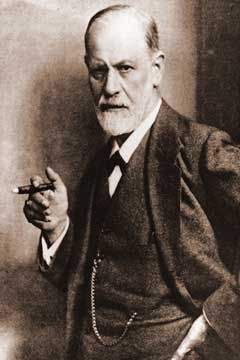Эллиот Аронсон - Общественное животное. Введение в социальную психологию
Скачивание начинается... Если скачивание не началось автоматически, пожалуйста нажмите на эту ссылку.
Жалоба
Напишите нам, и мы в срочном порядке примем меры.
Описание книги "Общественное животное. Введение в социальную психологию"
Описание и краткое содержание "Общественное животное. Введение в социальную психологию" читать бесплатно онлайн.
22. Turner, M., amp; Pratkanis, A. (1993). Effects of preferential and meritorious selection on performance: An examination of intuitive and self-handicapping perspectives. Personality and Social Psychology Bulletin, 19, 47-58.
23. Deaux, К., amp; Таупог, J. (1973). Evaluation of male and female ability: Bias works two ways. Psychological Reports, 32, 261-262.
24. Lerner, M. (1965). Evaluation of performance as a function of performer's reward and attractiveness. Journal of Personality and Social Psychology, 1, 355-360. Lerner, M. (1980). The justice motive. New York: Plenum.
25. Furnham, A., amp; Gunter, B. (1984). Just world beliefs and attitudes toward the poor. British Journal of Social Psychology, 23, 265-269.
26. Fischhoff, В., amp; Beyth, R. (1975). ‹I knew it would happen›: Remembered probabilities on once-future things. Organizational Behavior and Human Performance, 13, 1-16.
27. Janoff-Bulman, R., Tirnko, C., amp; Carli, L.L. (1985). Cognitive biases inblaming the victim. Journal of Experimental Social Psychology, 21, 161-177.
28. Gould, S. (1977). Eversince Darwin: Reflectionsonnatural history (p. 243). New York: W.W. Norton.
29. Pearson, K., amp; Мои!, M. (1925). The problem of alien immigration into Great Britain, illustrated by an example of Russian and Polish Jewish children. Annals of Eugenics, 1,5-127.
30. Janis, 1., amp; Field, P. (1959). Sex difference and personality factors related to persuasibility. In C.I. Hoviand and 1.L. Janis (Ed.), Personality and persuasibility (pp. 55-68). New Haven: Yale University Press.
31. Sistrunk, F., amp; McDavid, J. (1971). Sex variable in conforming behavior. Journal of Personality and Social Psychology, 77, 200-207.
32. Word, С., Zanna, M., amp; Cooper, J. (1974). The nonverbal mediation of self-fulfilling prophecies in interracial interaction. Journal of Experimental Social Psychology, 10,109-120.
33. Snyder, M. (1984). When belief creates reality. In L. Berkowitz (Ed.), Advances in experimental social psychology (Vol. 18, pp. 247-305). Orlando, FL: Academic Press.
34. Merton, R.F. (1968). The self-fulfilling prophecy. Antioch Review, 8, 193-210.
35. Snyder, M., amp; Swann, W.B., Jr. (1978). Hypothesis-testing processes in social interactions. Journal of Personality and Social Psychology, 36, 1202-1212.
36. Обзор результатов - см.: Pettigrew, T.F. (1985). New black-white patterns: How best to conceptualize them? Annual Review of Sociology, II, 329-346.
37. Frey, D.L., amp; Gaertner, S.I. (1986). Helping and the avoidance of inappropriate interracial behavior: A strategy that perpetuates a non-prejudiced self-image. Journal of Personality and Social Psychology, 50, 1083-1090.
38. Devine, P.G. (1989). Stereotypes and prejudice: Their automatic and controlled components. Journal of Personality and Social Psychology, 56, 5-18.
39. Bern, D., amp; Bern, S. (1970, November). We're all nonconscious sexists. Psychology Today, pp. 22-26,115-116.
40. Weitynan, L., Eifler, D., Hokada, E., amp; Ross, C. (1972). Sex-role socialization in picture books for preschool children. American Journal of Psychology, 77, 1 125-1 150. Kolbe, R., amp; LaVoie, J. (1981). Sex-role stereotyping in preschool children's picture books. Social Psychology Quarterly, 44, 369-374.
41. Hartley, R. (1960), Children's concepts of male and female roles. Merrill-Palmer Quarterly, 6,83-91.
42. Lipman-Blumen, J. (1972). How ideology shapes women's lives. Scientific American, 226(\), 34-42.
43. Gray, S. W. (1975). Masculinity-femininity in relation to anxiety and social acceptance. Child Development, 28, 203-214.
44. Broverman, 1.К., Vogel, S., Broverman, D., Clarkson, F., amp; Rosencrant^, P. (1972). Sex-role stereotypes: A current appraisal. Journal of Social Issues, 28, 59-78.
45. Porter,N., amp; Geis,F.(l9Sl). Women and nonverbal leadership cues: When seeing is not believing. In C. Mayo and N. Henley (Eds.), Gender and nonverbal behavior. New York: Springer-Verlag.
46. Baron, R.S., Burgess, M.L., amp; Kao, C.F. (1991). Detecting and labeling prejudice: Do female perpetrators go undetected? Personality and Social Psychology Bulletin, 17, 115-117.
47. Bern, S.L. (1975). Sex-role adaptability: One consequence of psychological androgyny. Journal of Personality and Social Psychology, 31, 634-643. Chesler, P. (1972). Women and Madness. New York: Avon Books.
48. Jackson, L.A., amp; Cash, T.F. (1985). Components of gender stereotypes: Their implications for inferences on stereotypic and nonstereotypic dimensions. Personality and Social Psychology Bulletin, II, 326-344.
49. Homer, M.S. (1970). Femininity and successful achievement: Abasic inconsistency. In J.M. Bardwick et al. (Eds.), Feminine personality and conflict. Monterey, CA: Brooks/Cole. Homer, M.S. (1972). Toward an understanding of achievement-related conflicts in women. Journal of Social Issues, 28, 157-175.
50. Cherry, F., amp; Deaux, K. (1975). Fear of success versus fear of gender-inconsistent behavior: A sex similarity. Paper presented at the Midwestern Psychological Association Convention.
51. Gerbner, G. (1993). Women and Minorities on Television. Unpublished paper, the Annenberg School for Communication, University of Pennsylvania. Gerbner, G., Gross, L., Morgan, M., amp; Signorielli, N. (1993). Growing up with television: The cultivation perspective. In J. Bryant and D. Zillman (Eds.), Media Effects: Advances in theory and research. Hilisdale, NJ: Eribaum.
52. Thibodeau, R. (1989). From racism to tokenism: The changing face of blacks in New Yorker cartoons. Public Opinion Quarterly, 53, 482-494.
53. Kolbe, R., amp; LaVoie, /.(1981). Sex-role stereotyping in preschool children's picture books. Social Psychology Quarterly, 44, 369-374.
54. Chavez, D. (1985). Perpetuation of gender inequality: A context analysis of comic strips. Sex Roles, 13, 93-102,
55. Geis, F., Brown, V., Jenningf(Walstedt), J., amp; Porter, N. (1984). TV commercials as achievement scripts for women. Sex Roles, 10, 513-525.
56. Cracker, J., Thompson, L.L., McGraw, K.M., amp; Ingerman, C. (1987). Downward comparison, prejudice, and evaluations of others: Effects of self-esteem and threat. Journal of Personality and Social Psychology, 52, 907-916.
57. Dollard, J. (1987). Class and caste in a southern town. New Haven: Yale University Press.
58. Bettelheim, B., amp; Janowit^, M. (1964). Social change and prejudice, including dynamics of prejudice. New York: Free Press.
59. Tumin, M., Barton, P., amp; Burrus, B. (1958). Education, prejudice, and discrimination: A study in readiness for desegregation. American Sociological Review, 23, 41-49.
60. Levitas, M. (1969). America in crisis. New York: Holt, Rinehart and Winston.
61. Dollard, J. (1938). Hostility and fear in social life. Social Forces,]7, 15-26.
62. Roberts, E., цит. по: P. Jacobs and S. Landau (1971). To serve the devil (Vol. 2, p. 71). New York: Vintage Books.
63. Cracker, С., цит. по: P. Jacobs and S. Landau (1971). To serve the devil (Vol. 2, p. 81). New York: Vintage Books.
64. Greeley, A., amp; Sheatsley, P. (1971). The acceptance of desegregation continues to advance. Scientific American, 225 (6), 13-19. См. также: Vanneman, R.D., amp; Pettigrew, T.F. (1972). Race and relative deprivation in the urban United States. Race, 13, 461-486.
65. Sherif, M., Harvey, O.J., While, B.J., Hood, W., amp; Sherif, C. (1961). Intergroup conflict and cooperation: The Robbers Cave experiment. Norman: University of Oklahoma Institute of Intergroup Relations.
66. Hovland, C., amp; Sears, R. (1940). Minor studies of aggression: Correlation of lynchings with economic indices. Journal of Psychology, 9, 301-310.
67. Klineberg, 0. (1971). Black and white in international perspectives. American Psychologist, 26,119-128.
68. Speer, A. (1970). Inside the Third Reich: Memoirs (R. Winston and C.Winston, Trans.). New York: Macrnillan.
69. Miller, N., Bugelski, R. (1948). Minor studies in aggression: The influence of frustrations imposed by the in-group on attitudes expressed by the out-group. Journal of Psychology, 25,437-442.
70. Rogers, R., amp; Prentice-Bum, S. (1981), Deindividuation and anger-mediated interracial aggression: Unmasking regressive racism. Journal of Personality and Social Psychology, 41,63-73.
71. Weatherly, D. (1961). Antisemitism and the expression of fantasy aggression. Journal of Abnormal and Social Psychology, 62, 454-457.
72. Adomo, Т., Frenkel-Brunswick, E., Levinson, D., amp; Sanford, R.N. (1950). The authoritarian personality. New York: Harper.
73. McFarland, S.M., Ageyev, V.S., amp; Abalakina-Paap, M.A. (1992). Authoritarianism in the former Soviet Union. Journal of Personality and Social Psychology, 63, 1004-1010.
74. Greeley amp; Sheatsley, Acceptance of desegregation.
75. Pettigrew, T.F. (1959). Regional differences in anti-Negro prejudice. Journal of Abnormal and Social Psychology, 59, 28-36.
76. Pettigrew, T.F. (1958). Personality and sociocultural factors and intergroup attitudes: Across-national comparison. Journal of Conflict Resolution, 2, 29-42.
77. Watson, J. (1950). Some social and psychological situations related to change in attitude. Human Relations, 3, 15-56.
78. Kirkland, S.J., Greenberg, J., amp; Pys^c^ynski, T. (1987). Further evidence of the deleterious effects of overheard derogatory ethnic labels: Derogation beyond the target. Personality and Social Psychology Bulletin,]3, 216-227.
79. MacCrone, 1. (1937). Race attitudes in South Africa. London: Oxford University Press.
80. Laarsfeld, P. (1940). Radio and the printed page. New York: Duell, Sloan amp; Pearce.
81. Deutsch, M., amp; Collins, A^. (1951). Interracial housing: A psychological evaluation of a social experiment. Minneapolis: University of Minnesota Press. CM. также: Wilner, D., Walkley.R., amp; Cook, S. (1955). Human relations in interracial housing. Minneapolis: University of Minnesota Press.
82. Brehm, J. (1959). Increasing cognitive dissonance by a fait-accompli. Journal of Abnormal and Social Psychology, 58, 379-382.
83. Darley, D., amp; Berscheid, E. (1967). Increased liking as a result of the anticipation of personal contact. Human relations, 20, 29-40.
84. National Opinion Research Center (1980). General social surveys, 1972- 1980: Cumulative codebook. Storrs, CT: Roper Public Opinion Research Center, University of Connecticut.
85. Pettigrew, T.F. (1961). Social psychology and desegregation research. American Psychologist, 16,105-112.
86. Clark, К.В. (1953). Desegregation: An appraisal of the evidence. Journal of Social Issues, 9, No. 4.
87. Stouffer, S., Suchman, E., DeVinney, L., Star, S., amp; Williams, R., Jr. (1949). The American soldier: Adjustment during army life. In Studies in social psychology in WW II (Vol. 1). Princeton: Princeton University Press.
88. Kramer, B. (1951). Residential contact as a determinant of attitudes toward Negroes. Unpublished Ph.D. dissertation, Harvard University. Winder, A. (1952). White attitudes towards Negro-white interaction in an area of changing racial composition. American Psychologist, 7, 330-331.
89. Asher, S., amp; Alien, V. (1969). Racial preference and social comparison processes. Journal of Social Issues, 25, 157-166. Stephan, W., amp; Kennedy, J. (1975). An experimental study of inter-ethnic competition in segregated schools. Journal of School Psychology, 13, 234-247. Gerard, H., amp; Miller, N. (1976). School desegregation. New York: Plenum.
90. Stephan, W.G. (1978). School desegregation: An evaluation of predictions made in Brown v. The Board of Education. Psychological Bulletin, 85, 217-238.
91. Lester, J. (1971). Beep! Beep! Umgawa! Black Power! In R. Kytie (Ed.), Confrontation: Issues of the 70's (pp. 162-181). New York: Random House.
92. Deutsch amp; Collins, Interracial housing.
93. Sherif, M., amp; Sherif, C. (1956). An outline of social psychology. New York: Harper amp; Bros. Sherif, Harvey, White, Hood, amp; Sherif, Intergroup conflict and cooperation.
94. Deutsch, M. (1949). A theory of cooperation and competition. Human Relations, 2, 129-152. Deutsch, M. (1949). An experimental study of the effects of cooperation and competition upon group process. Human Relations, 2, 199-232.
95. Keenan, P., amp; Camevale, P. (1989). Positive effects of within-group competition on between-group negotiation. Journal of Applied Social Psychology, 19, 977- 992.
96. Aronson, E., Stephan, С., Sikes, J., Blaney, N., amp; Snapp, M. (1978). Thejigsaw classroom. Beverly Hills, CA: Sage Publications. Aronson, E., amp; Osherow, N. (1980). Cooperation, prosocial behavior, and academic performance: Experiments in the desegregated classroom. In L. Bickman (Ed.), Applied Social Psychology Annual (Vol. I, pp. 163-196). Beverly Hills, CA: Sage Publications.
97. Stephan, W. (1975). An experimental study of interethnic competition in segregated schools. Journal of School Psychology, 13, 234-247.
Подписывайтесь на наши страницы в социальных сетях.
Будьте в курсе последних книжных новинок, комментируйте, обсуждайте. Мы ждём Вас!
Похожие книги на "Общественное животное. Введение в социальную психологию"
Книги похожие на "Общественное животное. Введение в социальную психологию" читать онлайн или скачать бесплатно полные версии.
Мы рекомендуем Вам зарегистрироваться либо войти на сайт под своим именем.
Отзывы о "Эллиот Аронсон - Общественное животное. Введение в социальную психологию"
Отзывы читателей о книге "Общественное животное. Введение в социальную психологию", комментарии и мнения людей о произведении.













